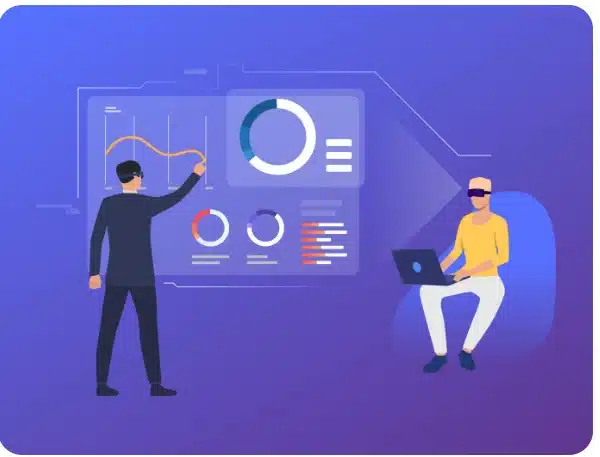5 Ways AI Website Analysis Can Improve Your Site’s User Experience

User experience (UX) is not just a design choice—it’s a competitive advantage. A website that loads faster engages visitors and anticipates user behavior, leading to better conversion rates, lower bounce rates, and higher customer satisfaction.
But here’s the challenge: traditional analytics tools often fail to diagnose deep-rooted UX issues. This is where AI website analysis emerges as a transformative solution. With its real-time insights, predictive models, and data-driven intelligence, AI doesn’t just analyze your website—it helps you optimize it continuously for users.
Let’s explore five powerful ways AI website analysis can dramatically enhance your site’s user experience.
1. Uncovers UX Friction Points with Pinpoint Accuracy
Traditional heatmaps and click-tracking tools show you what users do. But AI goes deeper by analyzing why they behave the way they do.
AI website analysis tools use machine learning to:
- Detect patterns of frustration (e.g., repeated clicks, hesitations)
- Identify dead zones or confusing CTAs
- Spot rage clicks or abrupt exits
- Analyze user flow bottlenecks
These tools can automatically flag problematic areas, so you don’t have to guess what’s broken. Understanding what interrupts user journeys allows you to make design changes that streamline navigation and reduce drop-offs.
2. Personalizes User Experience Based on Behavioral Insights
One of AI’s most powerful contributions to UX is hyper-personalization. Instead of offering a one-size-fits-all layout, AI website analysis can dynamically adapt the site experience based on each visitor’s intent, location, and behavior.
For example:
- Returning visitors can be shown personalized product suggestions
- First-time visitors can be directed to popular content or onboarding pages
- AI chatbots can trigger context-aware assistance
This level of customization boosts engagement, session duration, and trust, creating a more welcoming and intuitive experience for every user segment.
3. Optimizes Load Times and Performance for Different Devices
Page speed is critical to user experience. According to Google, a delay of just one second can reduce conversions by up to 20%. AI website analysis tools monitor performance metrics across mobile, desktop, and tablet and recommend actionable improvements.
AI can:
- Detect heavy scripts slowing down your site
- Recommend lazy loading for media elements
- Automatically compress images without quality loss
- Identify geographic server issues affecting regional users
Developers can continuously refine performance parameters using AI-driven insights to ensure fast, frictionless access across all devices.
4. Enhances Accessibility for All Types of Users
Accessibility is no longer an afterthought—it’s essential for ethical and inclusive design. AI website analysis helps make your site accessible by identifying and correcting common barriers that traditional testing tools might overlook.
AI-based tools can:
- Scan for contrast issues and font readability
- Detect missing alt text for screen readers
- Identify improper HTML semantic structures
- Recommend voice-assistance compatibility adjustments
By automating accessibility audits, AI ensures your website complies with WCAG (Web Content Accessibility Guidelines), resulting in a more inclusive user experience for people with disabilities.
5. Predicts User Intent to Improve Journey Flow
Imagine if your website could understand what visitors want—before they click. AI can make this a reality through predictive analytics.
By analyzing behavioral data and browsing history, AI systems:
- Anticipate what users are likely to do next
- Serve relevant content or offers at the right moment
- Identify potential exit points and deploy interventions (like exit-intent popups)
- Recommend changes to layout or CTAs to improve pathing
This predictive capability helps optimize journey mapping, ensuring users reach their goals faster, with fewer distractions or frustrations.
Conclusion
AI website analysis brings precision, adaptability, and foresight that traditional UX tools can’t match. From detecting micro-frustrations to personalizing experiences and improving accessibility, AI helps you build a site that is not just functional—but truly user-first.
In 2025 and beyond, brands that invest in AI-powered UX improvements will retain more users and convert them into loyal customers. In the world of digital experience, every click, scroll, and interaction counts—and AI is your secret weapon to making each one better.

Smart, Simple, Seamless: The Rise of NFC Business Cards

Top Features of Dynamics 365 Customer Engagement You Should Be Using

Professional Branding Strategy Services: Why Your Brand Needs More Than a Logo

Accelerating drug discovery through the DEL-ML-CS approach

AI in Marketing Is No Longer a Buzzword — It’s the Strategy

Renewable Energy Systems: A Smarter Way to Power the World

AI-Powered Marketing Solutions: Revolutionizing Digital Advertising

Top Benefits of 3D Rendering: A Comprehensive Overview








